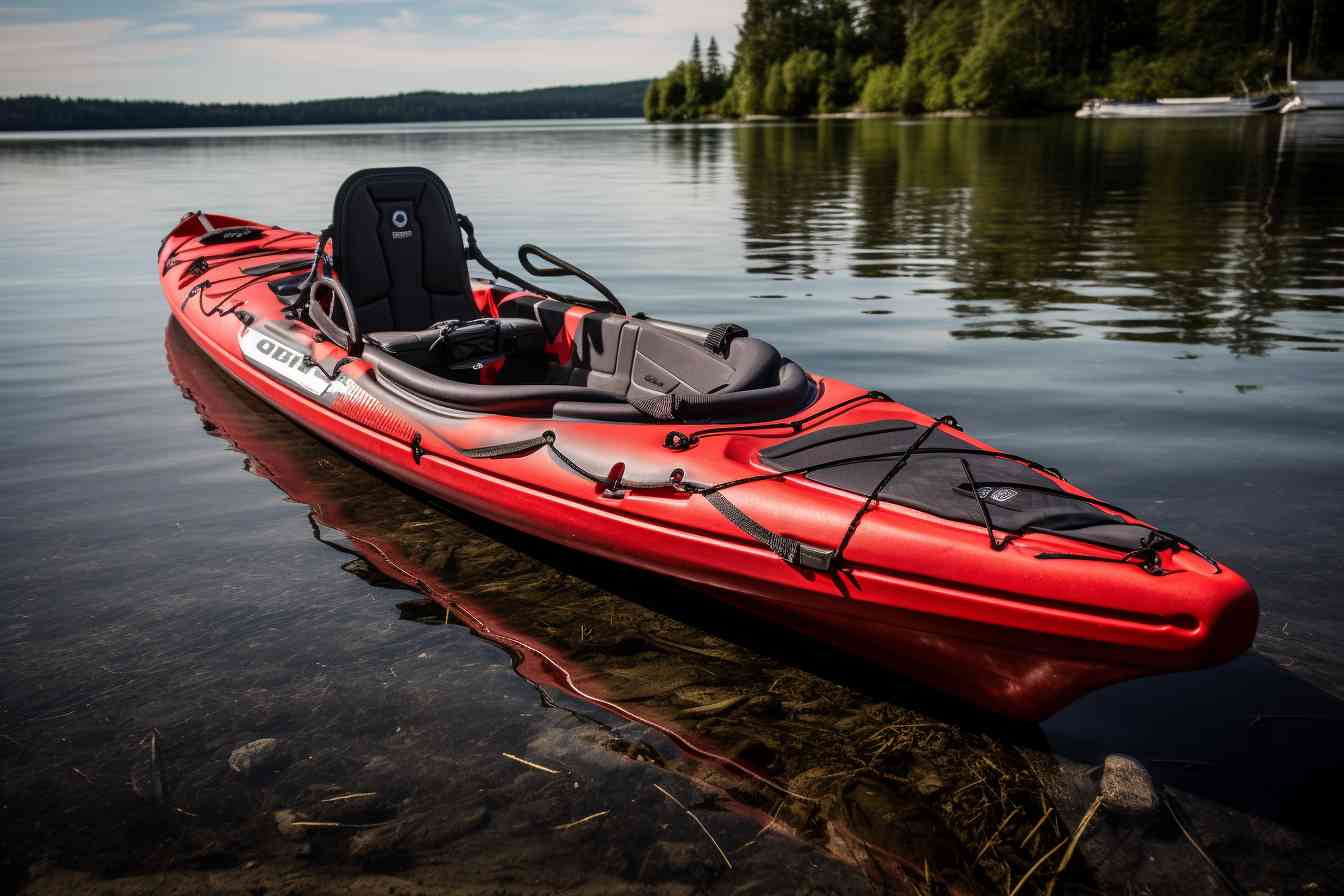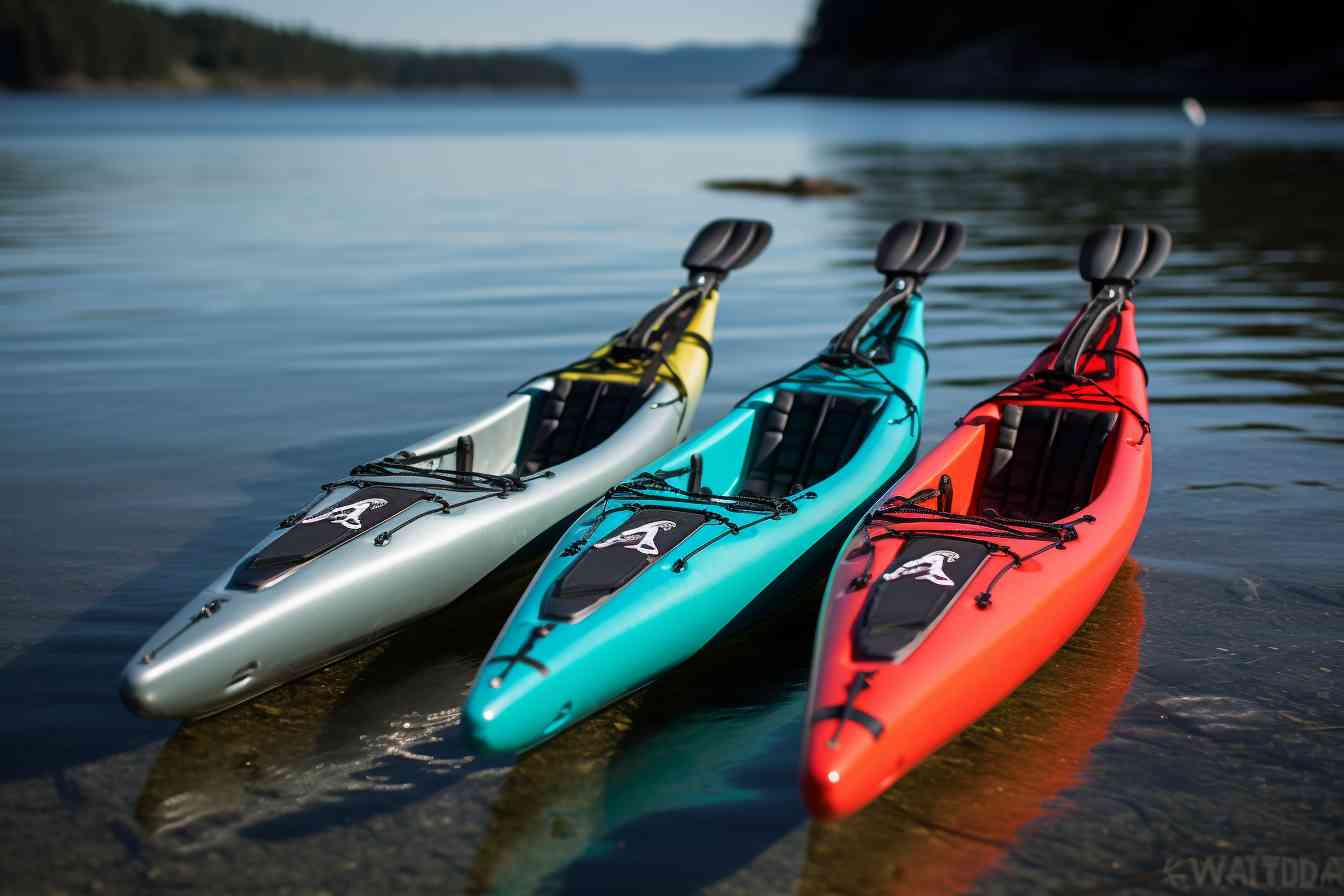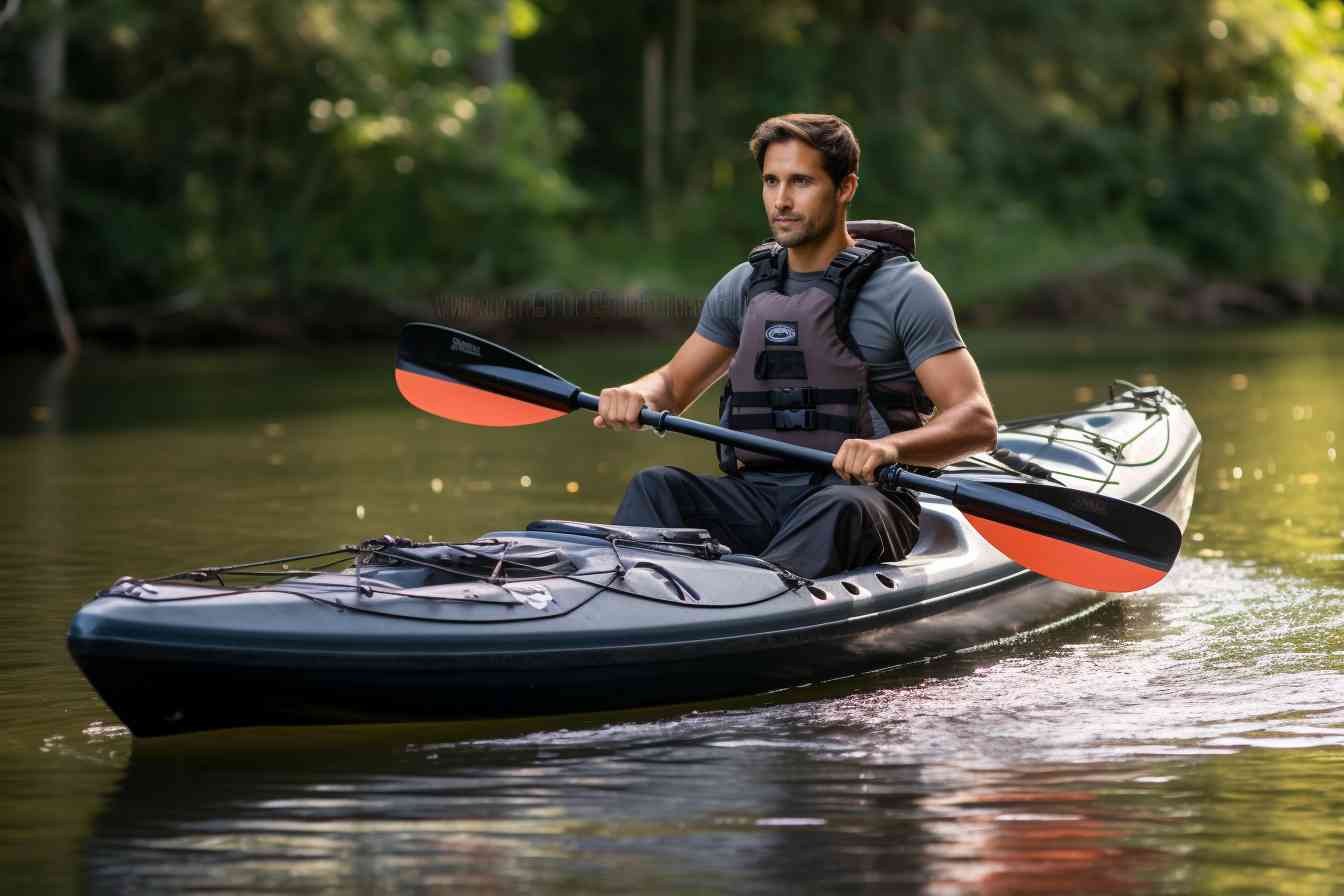Intro: How To Choose A Kayak Paddle

Oh boy, isn’t kayaking one the most thrilling outdoor adventures you can experience? I’m telling you, there’s something awe-inspiring about paddling across the vast expanse of water that seems to go on forever, surrounded by the beauty of nature. But you know, no matter how excited you are, you can’t just hop on a kayak without the right equipment. Among the most crucial pieces to consider is your kayak paddle.
Picking the right paddle isn’t as simple as grabbing the nearest stick, my friends. There’s a whole lot to consider before you make your choice. First and foremost, you gotta consider the paddle’s length. It’s paramount. Too short and you’ll struggle to reach the water; too long and you’ll wear yourself out real quick. The ideal length of your paddle will depend on your height and the width of your kayak.
Material is another essential factor. There’s a range of paddle materials available, each with their own advantages and downfalls. For instance, fiberglass paddles offer a perfect blend of durability, lightweight, and affordability. Carbon fiber, on the other hand, is the lightest and stiffest material, but also the priciest. Aluminum and plastic paddles are usually the most economical choice, though they’re heavier and less durable.
Finally, don’t forget to think about the blade shape and design. It plays a pivotal role in the paddle’s performance on water. Some blades are short and wide, designed for quick and powerful strokes, while others are long and narrow for a more relaxed, long-distance paddling.
So you see, choosing the right paddle requires a bit of thought. But trust me, once you find the right one, it will be worth every penny and every second spent. Happy paddling, folks!
How Do I Know What Kayak Paddle To Buy?

Well, let me tell you – choosing a kayak paddle is not as challenging as it seems. First things first, the size matters! The height and the width of your boat play a significant role in determining the perfect paddle length. If you’re a taller person or have a wider boat, go for a longer paddle. It gives a more comfortable paddling stroke without making you stretch too much. Also, longer paddles come in handy – quite literally – when the water’s a bit choppy.
Now, here’s a heads-up – the materials of the paddle are essential too. The three main types are plastic, fiberglass, and carbon fiber. Plastic paddles are the least expensive but they’re heavier and don’t ruffle my feathers. Fiberglass paddles are lightweight, durable, and provide good performance without putting a hole in your wallet. If money is no object to you, then Carbon fiber paddles are the best bet. They’re super lightweight and efficient, but they’re on the expensive side.
And let’s talk about the blade shape and design. High angle blades are broad and short, and they’re used for aggressive, fast-paced paddling. On the other hand, Low angle blades are long and thin, designed for relaxed, long-distance travels.
Lastly, you got to consider the shaft design. Straight shaft paddles are the common choice, but bent shaft paddles with their ergonomic design can reduce fatigue and are a boon for long trips.
Don’t sweat over it, just keep these tips in mind and you’ll find the perfect paddle that suits your kayaking style. Happy paddling!
What Size Kayak Paddle For My Height?

Alright, picking the right size kayak paddle for your frame – it’s not as tough as you might think. Let me walk you through it.
First off, it’s super important to understand that the length of your kayak paddle directly correlates with your height and the width of the kayak. That’s the key! Now, why so you ask? Well, imagine you’re a bit on the taller side – you’ll naturally need a longer paddle to comfortably reach the water from your seated position.
Now, you’ve probably noticed different kayak paddle sizes ranging from 210 cm all the way up to 260 cm. If you’re under 5’5” in height, you’ll likely be steering towards a paddle within the range of 210-220 cm. But, if your height is more in the 5’5” to 6’ bracket, you’re probably going to need a paddle that measures 220-230 cm. And those of you above 6 feet, you’re looking at paddles of 230 cm and above.
As for the width of your kayak, wider boats typically require longer paddles for the same reasons – your reach just has to go further…makes sense, doesn’t it? Let’s look at a kayak width of over 28 inches. If that’s what you’re rowing, then grabbing a paddle that’s 240 cm or longer is a smart route to take.
Remember – the right size paddle enhances your kayaking excursions and minimizes fatigue, leading to more enjoyable experiences on the water. So, take a minute to measure up, folks. It could make all the difference in your next kayaking adventure!
Which Paddle Should I Use In My Kayak?

Boy, oh boy! Paddles are just as crucial as the kayak itself when it’s about kayaking. If you’ve been asking “which paddle should I use in my kayak?” then fret not – I’m here to help!
First and foremost, let’s understand this – the choice of your paddle is not a one-size-fits-all matter. It hinges on various particulars, such as your height, the width of your kayak, and your paddling style. Sounds a bit overwhelming, huh? But trust me, once we break it down, it’s as smooth as a glide on a glassy lake.
For an average-sized kayaker, a paddle between 210 to 220 centimeters is typically advised. Now, if you’re a tad taller or if your ride is wider than the usual kayak, you might need a paddle around 230 to 240 centimeters.
Well, that’s the length! However, the material of the paddle has a major role as well. See, heftier materials like plastic or aluminum can be wallet-friendly but might weigh you down after a few hours. Contrarily, lighter choices like carbon fiber or fiberglass are kinder to your arms and provide better performance but can be a bit heavy on your pocket.
Now, the last bit—your paddling style—low angle or high angle. The high angle style is more aggressive, while the low angle is more casual, relaxed. For high angle, go for a shorter, wider paddle; for low angle, select a longer, narrower one.
Got it, right? Dearest kayaker, remember, it’s not just about the paddle itself but how it complements your style, physique, and kayak. So when you’re choosing a paddle, take your time, try out a few if you can, and always consider comfort and efficiency! Bye for now, happy paddling!
Is It Better To Have A Longer Or Shorter Kayak Paddle?
Well now, folks ask me all the time, “” There’s a whole lotta factors to consider, and the right answer, well, it vary depending on you and your needs!
If you’re tall, or your kayak is wide, there’s a better chance that you’ll be better off with a longer paddle. You need enough reach to dip your paddle fully into the water without leaning too far over – that can lead to flipping your kayak, and we don’t want that, do we? Nah!
On the other hand, if you possess shorter stature, or if your kayak is narrow, you might find that a shorter paddle fits your needs better. It provides greater control and maneuverability, which is especially valuable for navigating tight, winding waterways. Plus, using a shorter paddle minimizes the risk of paddling injuries such as shoulder impingement or tendonitis.
Dangling over the decision, though, won’t do you no good – you gotta test some paddles out! Feel the difference between a longer paddle and a shorter one. Then, choose whichever feels the most comfy and efficient for you. Afterall, choosing the right paddle truly comes down to personal preference and comfort, though we can’t deny the general guldines. So, get out there and give it a go! You’ll soon discover your paddle is quite literally your best friend on the water. Ain’t that something to look forward too… Finding your perfect paddle and becoming one with the water!
Remember, the paddle you choose can have a big impact on your overall kayaking experience. So, consider all these factors before you head out to purchase your next paddle. Happy paddling, y’all!
How To Choose A Kayak Paddle Calculator
Choosing the right kayak paddle isn’t all about picking the one you find most attractive. There is a science to it! There’s even a calculator to help you decide. Let me explain:
-
First, you’ve got to consider your height. The taller you are, the longer the paddle you’ll typically need. The kayak paddle calculator takes your height into account to suggest an ideal paddle length.
-
Next, your kayak’s width also plays a role. If the kayak is wide, you’ll need a longer paddle to reach the water comfortably.
-
Speaking of comfort, your paddling style matters. High-angle paddlers, who prefer an aggressive style with a quicker cadence, will need shorter paddles. On the other hand, low-angle paddlers, who prefer a more relaxed touring style, will benefit from longer paddles.
-
You also need to mull over the material of the paddle. Typically, the lighter the paddle, the less fatigue you’ll experience. The paddle calculator can help you figure out which materials best suit your style and endurance level.
-
Lastly, the blade’s shape and size can affect your paddling efficiency. A wider blade allows for a slower but more powerful stroke, which is great for manoeuvring. A narrower blade, though, is perfect for speed and a high cadence.
The kayak paddle calculator does all the math for you. All you need to do is punch in some specific details about yourself and your paddling habits. From there, it gives a solid suggestion for your ideal paddle. However, remember, nothing beats ‘hands-on’ experience – so trying out several options would certainly help hone your decision-making process!
Final Verdict
Let’s get down to brass tacks here—choosing the perfect kayak paddle is no small task. There are a slew of different factors to consider, and it takes mindful deliberation and practical knowledge to nail the decision.
Size matters—I mean with kayak paddles, of course! A suitable paddle should be in sync with your torso length and kayak’s width, giving you maximum efficiency. Now, don’t get me wrong—I’m not saying the longest paddle is the best. It’s all about finding the Goldilocks zone—just right.
It’s also crucial to consider the material of the paddle. Do you prefer aluminum, fiberglass, or carbon fiber? Remember, while weight is a factor, so is durability. Carbon fiber is light and sturdy but can put a dent in your wallet. Fiberglass is a middle-of-the-road option, while aluminum is the most economical and, might I add, pretty tough, too.
Blade design is no less important. Do you want a wider blade for a slower, more leisurely paddle or a narrow blade for quick, energetic strokes? There is no right or wrong choice here, it depends on your personal paddling style.
Also, it’s all good and well to have a fantastic kayak paddle, but it means zippo if you can’t handle it comfortably. Check out the diameter of the shaft. A comfortable grip reduces fatigue and increases control. Oh, and don’t ignore the power of an adjustable feathering system—it can really tweak your paddling efficiency.
So there you go, mate. The right kayak paddle isn’t a one-size-fits-all piece of equipment – it’s an extension of you in the water. It’s all about recognizing your needs and making the right call. Happy paddling!
Frequently Asked Questions
1. How do I choose the perfect kayak paddle for me?
Ah, that’s the first step to a great kayaking adventure! The perfect paddle would be a balance between length, shaft material, blade material, and the design of the blade. All these factors depend on your body dimension, your type of kayaking, and of course, your budget.
2. What impact does the paddle length have on kayaking?
Oh, it’s significant indeed! Paddle length affects both your comfort and paddling efficiency. If it’s too short, you might hit your hands on the kayak; if it’s too long, it might be challenging to maneuver. So you need one that’s just right for your body size and kayak width.
3. How do I measure myself to find the right paddle length?
Good question! You can determine the correct paddle length by comparing your height and the width of your kayak. There are charts available online that recommend a paddle length based on these two measurements.
4. Are there different types of blade designs?
Ah, you’re onto something! There are two primary blade designs – high-angle and low-angle blades. High-angle blades are broader, suitable for aggressive, fast paddling, while low-angle blades are longer and narrower, perfect for leisurely, long-distance kayaking.
5. How does the material of the paddle affect my kayaking?
Ah, this is crucial! Paddle material affects the paddle’s weight, durability, and cost. Lighter materials like carbon fiber and fiberglass reduce fatigue, but they’re costlier. Aluminum and plastic paddles are more affordable, but they’re heavier and less durable.
6. What does feathered and unfeathered mean in kayak paddles?
It’s all about the angle. Feathered paddles have blades set at different angles, which reduces wind resistance. Unfeathered paddles have blades aligned in the same direction. It’s a personal preference, really.
7. What about the shaft design? Any recommendations?
Totally! You have straight shafts and bent shafts. A bent shaft keeps your hands at a more relaxed angle, reducing fatigue and discomfort. However, they’re pricier than straight shafts.
8. Can I use a canoe paddle for my kayak?
Hmm, well, not recommended. Canoe paddles are single-bladed while kayak paddles are double-bladed. Double-bladed paddles allow quicker and more efficient paddling in a kayak.
9. How should I care for my kayak paddle to ensure its longevity?
Great thinking! Rinse it with fresh water after each use, particularly if you had been kayaking in salt water. Store it in a cool, dry place, out of direct sunshine, and always inspect for any damages before kayaking.
10. Can I simply buy the most expensive paddle to get the best one?
Well, not really. The most expensive paddle may be packed with features, but it will not serve you well if it doesn’t fit your body size, kayak type, and paddling style. It’s all about finding the right balance!

